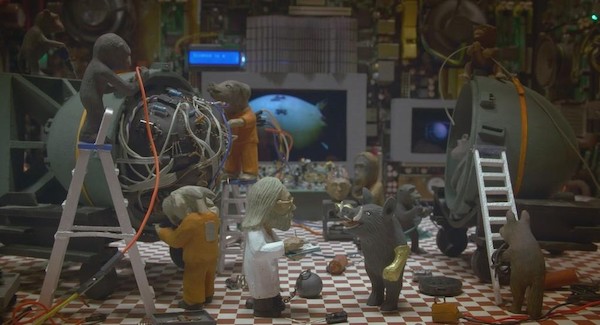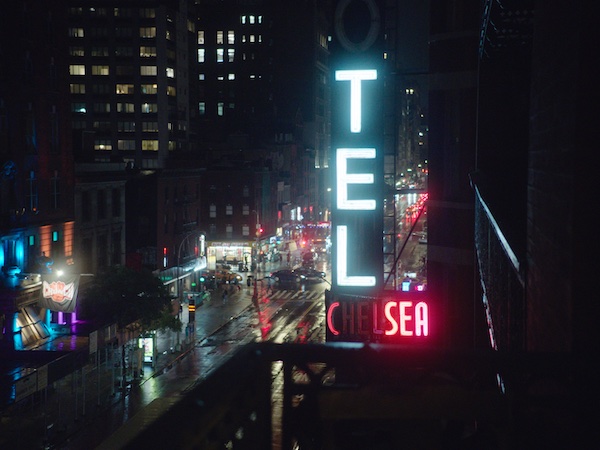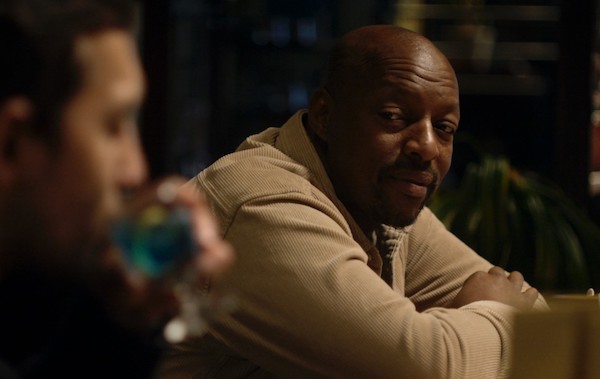Film Review: At the Berlin International Film Festival — Art on Screen in Many Forms
By David D’Arcy
The Berlin international Film Festival has always been an event where films on art, architecture, and design premiere. This year, as always, the selections were a mixed bag.
A defining photograph of Menachem Begin taken by Micha Bar-Am shows the stern Israeli leader in a tie, wearing sunglasses, looking outward and upward. It’s the generic pose of a strongman. The picture captures Begin, his attitude of smug assured confidence, his arrogant certitude and seeming intransigence, down to the impenetrable lenses of his glasses, which annoyed his Arab enemies, as well as plenty of Israelis and Americans. The posture was an asset in negotiating a peace agreement with Egypt.
In 1341 Frames of Love and War, the Magnum photographer, now 92, looks back at leaders and soldiers and civilians in his many decades of work. Those pictures, taken mostly in Israel, are about war and much more. The documentary premiered at the Berlinale.
Bar-Am’s eye was attuned to war and produced a massive archive of images, half a million negatives. That’s far more than the film’s title suggests – from his childhood in Germany (where he was born Michael Anguli) to migration to Palestine, when he changed his name to Bar-Am (brother of the nation). His mostly (not entirely) heroic portrayals of Israel’s early struggles turned away from celebration toward a sober view of the consequences of war. He seems to have soured on conflict. Bar-Am’s wife (and archivist) of many decades, Orna, serves as a persistent reality check — affectionate and Sabra-crusty, right out of Israeli central casting.
It should be noted that Bar-Am, handsome as a young man, covered his face for decades with a voluminously full beard, and still does. It is an odd choice for a man who specializes in portraits that search faces for defining features and expressions.
Shot mostly in black and white, his pictures are haunting reminders of the enduring and striking power of still photographs. We see Arab prisoners caged together like farm animals in a military truck. Bar-Am photographed other prisoners, dead and piled up, their shoes removed. Were they murdered? He’s still not sure. He tells of watching an Israeli soldier from the unit that he followed in 1967 putting an Israeli flag on the top of the Dome of the Rock, the Muslim shrine in Jerusalem. The image was a sign of things to come, he says with regret. In the same period he also photographed the back of an Israeli soldier’s neck, machine gun bullets arranged like a decorative necklace on his back. Like it or not, Bar-am notes, war has an aesthetic.
Bar-Am was at the trial of Adolf Eichmann in 1961, and his pictures of the Nazi war criminal asserting his innocence are indelible, part of the historical memory of that event. Among the revelations in 1341 Frames of Love and War are his photographs of the Israeli spectators at the trial, including Holocaust survivors, transfixed with emotion as they watch the war criminal deny the charges brought against him.
The most chilling pictures, even beyond piles of bodies from the Sabra and Chatila massacres in Lebanon in 1982, are a series of photos taken of an Israeli response to reports of firing on a kibbutz. In a nearby Arab village, all the Palestinian men are gathered together. Local informants, their heads covered with burlap sacks, with holes for their eyes, pick out the terrorists from the village men. In a chilling drizzle, the operation of retribution looks medieval. Bar-Am delayed publishing those images, because doing so would have kept him from accompanying those sorts of military operations.
You can see these and other images in an informative interview with director Ran Tal prepared for the festival.
Other unexpected photos in the film are Bar-Am’s surveys of wall-sized Arab street graffiti, scrawled over (by whom?) to form what look like abstract murals filled with an energized fury, testimony to the vandalizing of communication.
Bar-Am doesn’t tell you everything, which means that Tal’s film doesn’t. The German-born Bar-Am provides pictures from the immediate post-war period, when he said he did his part as a young man, whatever that means. He returned to Germany when Israel got wind that Egypt was seeking to hire atomic scientists who worked under the Nazis. Just imagine the story behind that trip. The same can be said about Beirut and the drôle de guerre in the rich Christian suburbs while fighting tore the city apart in 1982
As Bar-Am and Orna sift through contact sheets, they end with late portraits. In a country ruled by war, the pictures seem to somehow float above the years of conflict. “There’s one thing I want to do, give people their faces back,” says the white-bearded photographer, for whom that project is still a work in progress.

A scene from Everything Will Be Ok.
Everything Will Be OK from the Cambodian director Rithy Panh sets a new bar for logistics and design, even though most of what you see is in miniature.
Don’t take the title at its word. The story here is no less than the violent takeover of the world by animals, which are shaped into mostly clay figures (a few inches high) and are arranged in grand elaborate scenes involving a brutal seizure of power. The leader is a tyrannical pig. An ever-present parallel narrative — projected within the screen as the animals go about their slaughter — shows violent horrors from over the past century. Panh, whose earlier films dealt with mass murder by the Khmer Rouge in Cambodia (which he escaped), doesn’t soften the savage part of history for his audience.
If Everything Will Be OK echoes Panh’s previous films, it also draws on George Orwell’s Animal Farm, a fable in which animals were capable of exploitation and tyranny. On one hand, the drama Panh has designed can feel like a handmade spectacle inspired by Cecil B. DeMille. His visuals also show affinities with untrained artists who build personal structures, like the Watts Tower by Simon Rodia, the cosmologies of the Indian artist Nek Chand, or the epic paintings and drawings of interplanetary war by Henry Darger. This isn’t to say that Panh knows or was inspired by these artists, but he shares their artisanal approach and their aspirations to the monumental.
Everything Will Be OK features an incantatory narrative by Rebecca Marder delivered in a Godardian monotone. The text ends by deploring the irrationality of violence — no matter what species it comes from. Aside from that message, a lot about this troubling extended essay film will leave you wondering (particularly about its title) as you admire its design.

A scene from Dreaming Walls.
Dreaming Walls is about the artists and other denizens holding out in the Chelsea Hotel. The documentary is likely to have a long life, because the Chelsea Hotel still survives, at least as a myth, in a gilded condo conversion.Two Belgian directors, Amélie van Elmbt and Maya Duverdier, filmed the residents, who are living in the hotel, which is now under renovation to become a luxury apartment complex when it reopens. The holdouts say the place is now soulless. The former Chelsea Hotel is also no place to live as the hammer pound away. The landlords, who see the holdouts as legally protected nuisances, aren’t interviewed. Nor are the residents who reached settlements with the hotel’s owners. You could call this film one-sided. That’s not the point.
The film is constructed around parallel dramas. There is the hotel’s colorful history of artists, authors, drug addicts, and Warhol-esque wannabes, recounted again and again by residents who witnessed it over the decades, with lots of archival wildness. And then the film cuts away to death-by-sheetrock today, as the costly rehab smothers the ambience and anarchy that gave the hotel its reputation
When these two worlds collide, when myth and money clash, we see the sorrow and the drama. Imagine living, as one couple does, in an apartment where their window onto 23d Street — the main thoroughfare of the now-expensive Chelsea neighborhood — is blocked by the vertical tracks of a construction elevator, which runs up and down at all hours, like a noisy Jack in the Box or a vengenful cuckoo clock.
There are echoes of the Maysles Brothers’ Grey Gardens here, the classic 1975 doc about mother and daughter heiresses from the Bouvier family sharing a decaying and stinking Southampton mansion with several dozen feral cats. Daniel Schmidt’s elegiac Tosca’s Kiss (1976), about the “Casa di Riposa,” an old age home in Milan for opera singers who can remember lyrics, but not much else, also comes to mind. When those films were made, the worlds they observed were still intact, albeit aging away. What makes Dreaming Walls different is that the once-protected residents of the Chelsea are walled in against their will, under a kind of hotel arrest, forced to learn what New York City has become if you’re not rich — aloof, indifferent and unaffordable.
As we saw with Todd Haynes’s Velvet Underground, the Warhol scene and the world around it generated layers upon layers of hangers-on. Dreaming Walls is more than a footnote to that history – it documents the everyday life of the last in situ remnants of the artists from the Chelsea scene, once New York’s ultimate hip destination.

A scene from A Flower in the Mouth.
Éric Baudelaire, director of A Flower in the Mouth (“Une Fleur dans la Bouche”), is a fixture of the experimental sections of film festivals. Where else would he be, with a name like Eric Baudelaire. He was born in Salt Lake City, by the way.
Baudelaire was at the Berlinale with what was essentially a package of two seemingly different films. The first part is a documentary on the contemporary flower business. In Aalsmeer, in the Netherlands, flowers are flown in from Africa and this sophisticated operation is devoted to keeping this perishable item “fresh,” so the flowers have the longest possible life once they are shipped and sold. There’s nothing romantic about the film or the flowers. The process is automated and chillingly efficient. We assume that marketers and consumers will add a touch of romance at a later stage. Ever present is the recognition that flowers have a short life — an acknowledgement of mortality?
Halfway through, Baudelaire’s doc pivots. We are in a bar near a railroad station, where a man (French rapper Oxmo Puccino) is having a drink. When a man who has missed his train (Dali Bensallah) enters, the guy at the bar speaks to him. He’s gregarious, intense, impatient, and overbearing in a talkative way that makes what seems like a drive-by half-film seem longer than it is. Eventually the man shares his secret. He is near death.
This half-film is a stagey interlude based on the play The Man with a Flower in His Mouth (1923) by the Italian writer Luigi Pirandello. It comes off as stagey because Baudelaire does not have much time to make his point. Bear in mind that the flower in the mouth is code for a tumor. But the emotional force here is enough to forgive Baudelaire for adjoining two seemingly different films which address the brevity of life.
A Flower in the Mouth should have a long ride at festivals, and a short life in US theaters. Try to see it when you can.
David D’Arcy lives in New York. For years, he was a programmer for the Haifa International Film Festival in Israel. He writes about art for many publications, including the Art Newspaper. He produced and co-wrote the documentary Portrait of Wally (2012), about the fight over a Nazi-looted painting found at the Museum of Modern Art in Manhattan.

